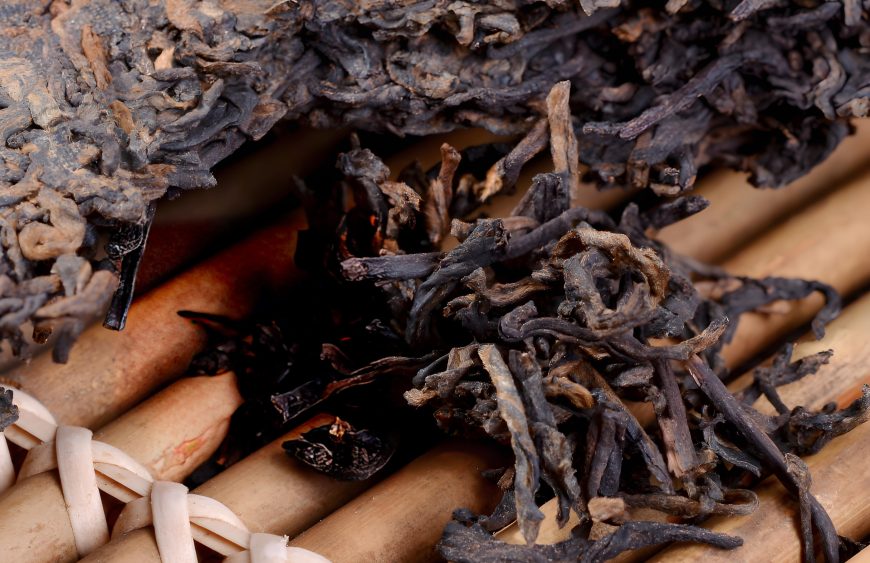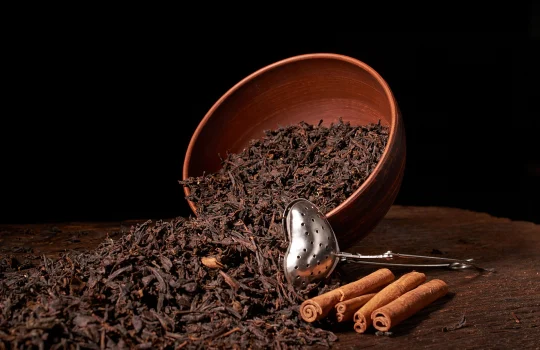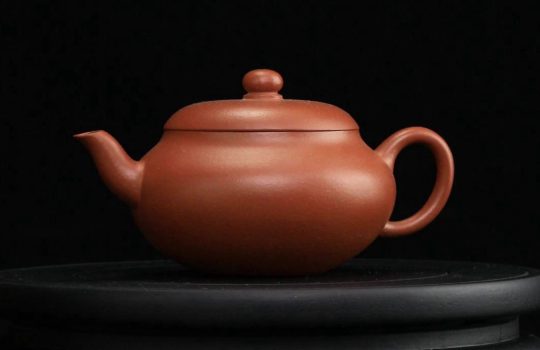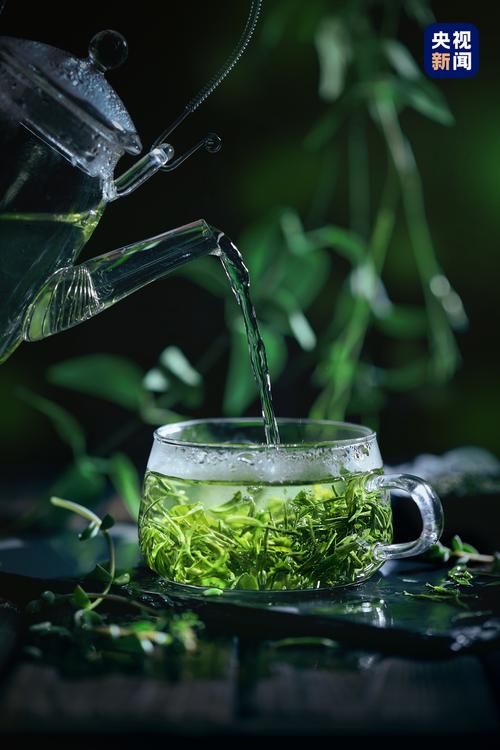The Historical Origins of Pu’er Tea
‘The fragrance of aged tea lingers like the scent of orchids, and the essence of Pu’er tea spans a thousand years.’ This phrase captures the most distinctive feature of Pu’er tea—the principle that ‘the older it is, the more fragrant it becomes.’ In Yunnan, the birthplace of Pu’er tea, there is a proverb that goes, ‘Grandfather’s tea, sold by his grandson.’ Pu’er tea is made from large-leaf variety sun-dried green tea native to Yunnan and its subsequent processing into two series: raw Pu’er tea, which is directly processed into finished products, and ripe Pu’er tea, which undergoes artificial accelerated fermentation before processing. In terms of form, it is divided into loose tea and compressed tea. After production, both continue to undergo natural ageing, possessing the unique quality of becoming more aromatic with age.
During the Ming and Qing dynasties, five ‘Tea Horse Ancient Trails’ radiated outwards from Pu’er, Yunnan, both domestically and internationally. To this day, many well-preserved sites of the Tea Horse Ancient Trails remain within Yunnan Province. These trails not only facilitated the distribution of Pu’er tea across China’s provinces and regions but also enabled its export to Southeast Asian countries as well as nations like the United Kingdom and Japan, earning it a renowned reputation both domestically and internationally.
Pu’er tea has a long history, with records of its cultivation dating back over 3,000 years to the Bronze Age. During the Tang Dynasty, Pu’er tea began to be cultivated and produced on a large scale, initially referred to as ‘Pu tea.’ By the Song Dynasty, Pu’er tea had gained recognition and played an important role in economic trade. During the Qing Dynasty, the production of raw Pu’er tea reached its peak and was included among the tribute teas, once serving as a national gift presented to foreign envoys, earning it the title of ‘Imperial Pu’er Tea.’ Following the outbreak of the War of Resistance Against Japan, the tea industry in Yunnan Province experienced a decline, and Pu’er tea entered a period of obscurity. It was not until 1975 that Yunnan Province resumed the production of Pu’er tea and developed the production process for ripe Pu’er tea. Due to its powerful health benefits and rich flavour, it has gained significant popularity in recent years.
Classification of Pu’er Tea
1. Classification by production method
(1) Raw tea: Fermented naturally after picking, it has a stimulating taste that becomes milder over time. When brewed, it has a greenish-yellow colour.
(2) Fermented tea: Fermented artificially using scientific methods to achieve a milder taste. When brewed, it has a golden-red colour.
2. Classification by storage method
(1) Dry-stored Pu’er tea: This refers to tea stored in well-ventilated, dry, and clean warehouses, allowing the tea leaves to ferment naturally. It is generally considered optimal to age for 10–20 years.
(2) Wet-stored Pu’er tea: Typically stored in a relatively humid environment to accelerate fermentation. Due to the faster ageing process in wet storage, more substances within the tea leaves are degraded, often resulting in earthy or mouldy flavours, and it is prone to mould growth, which is detrimental to human health.
3. Classification by Shape
(1) Cake tea: Flat, round disc-shaped, with each seven-disc cake weighing 357 grams. (2) Tuo tea: Similar in size to a rice bowl, each weighing 100 grams or 250 grams. (3) Brick tea: Rectangular or square-shaped, typically weighing 250–1,000 grams per piece. (4) Golden Gourd Tribute Tea: Pressed into irregularly shaped half-gourd forms, ranging from 100 grams to several kilograms. (5) Dry Two Tea: Pressed into irregularly shaped compressed strips, with each strip weighing significantly more. (6) Loose Tea: Pu’er tea that has not undergone compression during processing, retaining its loose leaf form.
Selecting Pu’er Tea
When selecting Pu’er tea, first consider your collection preferences, purpose, and timeframe. If you plan to store it long-term for appreciation, raw Pu’er tea is recommended. This is because raw tea can transform into ripe tea, a process taking approximately 10 years. For immediate consumption, ripe tea is suitable.
Secondly, when selecting tea, it is essential to verify the origin and manufacturer to ensure the quality of the tea. It is best to choose organic tea, with tea from ancient tea gardens being the highest quality.
Thirdly, when selecting tea, it is important to carefully assess the age and quality of the tea to determine the purchase price.
1. Assessing the appearance
Whether it is cake tea, tuo tea, brick tea, or other types of Pu’er tea, the first thing to look at is the appearance. This involves evaluating uniformity, density, colour, tenderness, and cleanliness to determine whether the shape is proper, the edges are neat, and the tea leaves are clearly defined. Pu’er tea has larger old leaves and smaller young leaves. If a tea cake lacks distinct patterns and appears fragmented, it is not a good tea. Next, examine the colour of the tea leaves, focusing on the depth of colour and luster. High-quality ripe Pu’er tea has a liver-like colour, and Pu’er tea aged for over five years typically exhibits this
colour.
2. Examine the packaging
In recent years, with the rise of the ‘Pu’er tea craze,’ the market is flooded with Pu’er tea, and counterfeit products inevitably appear. When purchasing Pu’er tea, the first thing that catches the eye is the packaging, so it is advisable to start by examining the packaging to assess the quality of the tea.
The materials commonly used for packaging Pu’er tea include cotton paper, bamboo leaves, bamboo baskets, and hemp rope for tying. However, regardless of the packaging materials used, they must be clean and odourless, the packaging must be sturdy and secure, and the size of the outer packaging must closely match the tea itself.
3. Smell the aroma
Generally, ripe tea retains a strong earthy aroma within three years, which is largely absent after five years. For raw tea, new tea has a strong fresh aroma, and the smoky aroma is more pronounced than in older tea, while older tea has a mellow aroma.
4. Observing the tea liquor colour
Good Pu’er tea produces a tea liquor that is reddish and translucent, with a faint oily film visible on the surface. Poor-quality Pu’er tea has a dark, almost black broth. Generally, Pu’er tea aged for less than three years is more turbid, while older tea becomes increasingly translucent.
Ripe tea gradually changes from brown to red, while raw tea changes from green to yellow, and after ten years, it changes from yellow to red.
5. Inspect the leaf base
The leaf base of raw Pu’er tea ranges from chestnut brown to dark chestnut brown, with plump, soft leaf strands that appear fresh. The leaf base of ripe Pu’er tea is mostly dark chestnut or black, with dry, thin, hard leaf strands. If heavily fermented, there will be noticeable carbonisation, resembling leaves scorched by intense heat. Additionally, some older leaves may have cracked surfaces and separated veins. However, if the pile fermentation time is not very long and the fermentation is not heavy, the leaf base will resemble that of raw tea leaves. Some raw teas, if not dried immediately after rolling during processing, will have a dark brown leaf base and a darker, more concentrated tea liquor.
Storage of Pu’er Tea
The unique qualities and aged aroma of Pu’er tea are formed through fermentation during storage. This is because, over time, the main components of Pu’er tea undergo chemical or physical changes, resulting in its distinctive tea liquor colour and aroma. However, improper storage conditions can significantly impact the formation of these qualities, so scientific storage is the key to ensuring the quality of Pu’er tea.
1. Dry and Well-Ventilated
As the saying goes: ‘Tea prefers bamboo leaves and fears fragrant herbs; it prefers warmth and dryness and avoids cold and dampness.’ When storing Pu’er tea, it is essential to choose awell-ventilated and dry location to prevent the tea leaves from becoming damp and accelerating the rate of deterioration. Additionally, Pu’er tea should be stored in a clean, odour-free environment, as tea leaves have strong absorptive properties and easily absorb odours from the air.
2. Bamboo Leaf Packaging
Traditional bamboo leaf packaging for Pu’er tea not only facilitates post-fermentation but also filters out impurities, ensuring the tea’s purity. Pu’er tea should not be sealed in plastic bags for packaging, as in humid climates, this can lead to mould growth and the development of odours, which can ruin the tea’s original flavour.
Nutritional Value of Pu’er Tea
For centuries, Pu’er tea has been highly favoured by consumers due to its excellent quality. Ancient texts mention its detoxifying and medicinal properties. In recent years, both domestic and international studies have delved into the physiological and pharmacological aspects of Pu’er tea, providing a deeper understanding of its benefits. Analysis has identified over 500 compounds in Pu’er tea, some of which are essential components for the human body, such as vitamins, proteins, amino acids, lipids, carbohydrates, and mineral elements. These compounds have significant nutritional value for the human body. Additionally, certain compounds have health-promoting and medicinal effects, such as tea polyphenols, caffeine, and polysaccharides. Drinking Pu’er tea can supplement the human body with various vitamins. Every 100 grams of Pu’er tea contains 100–200 milligrams of vitamins, which is higher than the content in fruits like lemons and oranges. Drinking Pu’er tea can also supplement the human body with proteins and amino acids. Pu’er tea contains over 25 types of amino acids, which can serve as a supplement for the human body’s daily requirements.




